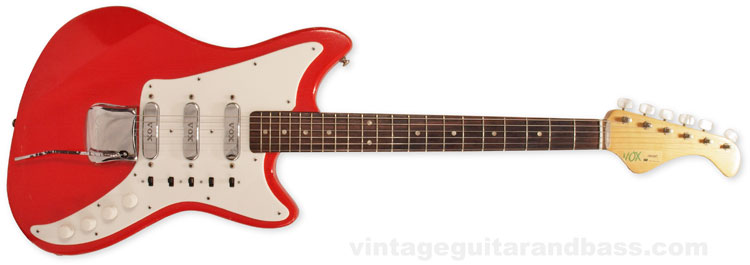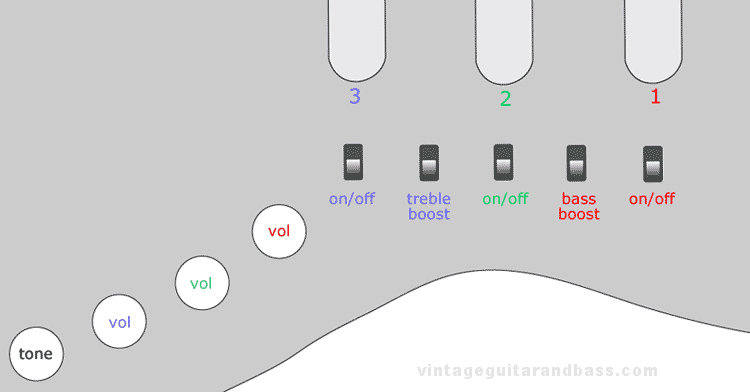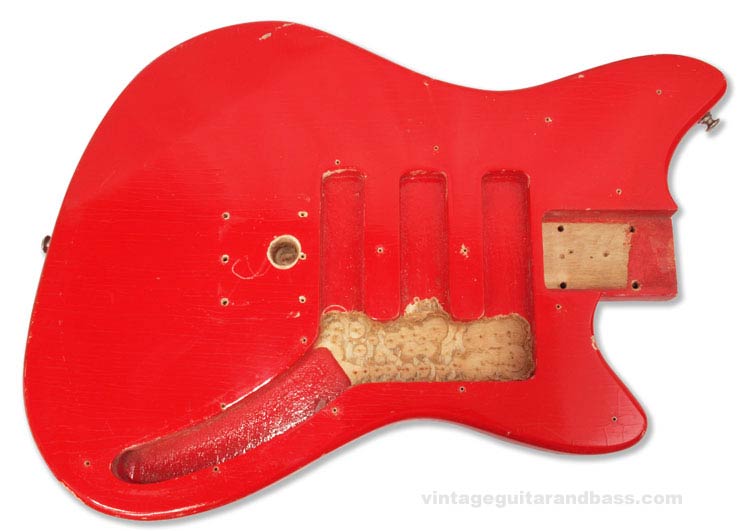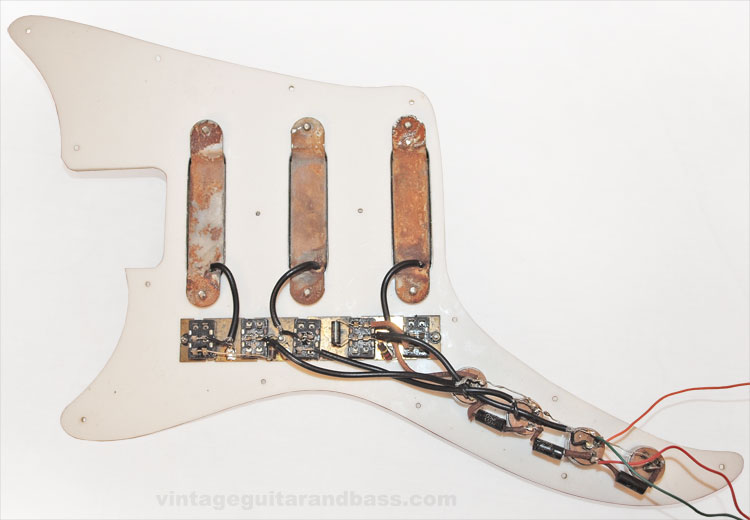

The Vox Consort, or V212, was produced in relatively small numbers by JMI in the UK, over the period 1960-1967. This was one of Vox's higher end models, and along with the Soundcaster, offered a decent alternative to Fender, at a time when American guitars were somewhat unobtainable for the average player in the UK. Parent company JMI had been Fender's UK distributor, and had clearly studied the instruments. They had primarily been an electronics company in the 1950s, and innovative circuitry would prove to be one of the exciting features of Vox guitars in the decade to follow. The first version of the Consort was one of the earliest attempts at going beyond the simplest guitar controls, although these were neither especially successful in terms of use or sales figures. In actual fact the controls were not overly complicated, but neither intuitive or particularly effective.
The Consort was an altogether more substantial instrument than many of the better known Vox Fender copies; it shared the same pickups, but was generally a far superior guitar. Thicker, heavier; this example weighs as much as (even a shade more than) a typical Stratocaster, has the same 25 1/2" scale, adjustable truss rod, and nice curved rosewood fingerboard, but the styling of the then-new Fender Jaguar and Fender Jazzmaster guitars. Available in Red or Sunburst nitrocellulose finish.
This guitar is equipped with three Vox V1 single coil pickups - as used on all solid bodies at this time. The controls consist of five switches and four pots. The diagram below describes specific useage; the pickups and related controls are colour-coded: red = neck, green = middle, blue = bridge. Each pickup has an on/off switch (up = off, down = on) and a volume pot. The two 'in between' switches consist of a tone choke, each only affecting one pickup. The second switch from the right acts as a bass boost for the neck pickup (down position), the second from the left a treble boost for the bridge pickup (down position). This is not strictly correct, the down position is actually the pickup alone, whilst the up position has the tone choke. These pickups certainly don't lack brightness. See the wiring images further down the page for a more in depth look. Finally there is a master tone pot - the only control to affect all three pickups. Even though this guitar has a fairly wide range of sounds, changing from one to another mid-song would have been very difficult indeed!


The body itself has had extra routing to accommodate the tone switches, performed after the finish had been applied. The precise wiring can be seen below. Click the image for a larger copy. Potentiometers are quite typical of early Vox guitars: all Morganite, 3 x 1M ohm volume controls and 1 x 500k ohm tone. All had a code 361 - unusual in Vox guitars - which might represent March 1961?

$50
$125
$125
$139
£466
£550
£27
£63
£63
£63
£146
£449
€268